Genaro: Reconfigured Triple Crown a tradition of its own
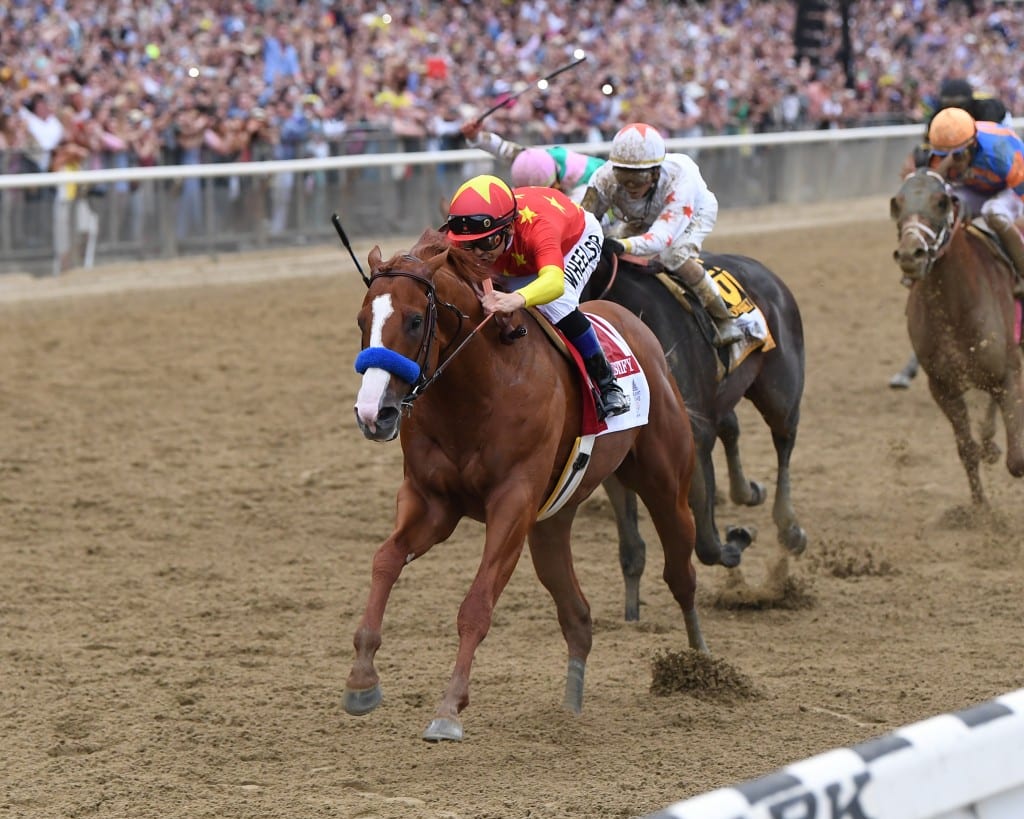
Justify won the 2018 Belmont Stakes and Triple Crown. Photo by Chelsea Durand/NYRA.
At the risk of stating the obvious, this year’s Triple Crown became something different from what we were used to the minute that Churchill Downs announced that it would host the Kentucky Derby on September 5.
We’d suspected before that, of course. A month before the traditional Derby date, virtually the entire country was limiting social contact in an effort to combat a virus that had exhibited an impressive ability to make its presence known and about which we knew far too little. What we did know was that having tens of thousands of people in one place was definitely not a good idea.
At first, prep races were held without on-site customers. Then some prep races were canceled altogether. Oaklawn Park carpe diemed, seizing the day of the Kentucky Derby to hold its own Arkansas Derby.
In the meantime, Maryland and New York, two states with devastatingly high numbers of Covid-19 infection, had to sit idly by, unable to make any definite plans until their respective states gave them permission to.
On Saturday morning, May 16, New York Governor Andrew Cuomo announced that the state’s racetracks could re-open as of June 1. Later that day, The Stronach Group released the date of the Preakness Stakes: October 3, the first Saturday in October, a month after the Kentucky Derby.
Wait… does that mean if a horse wins the Triple Crown, he gets an asterisk? The Derby winner will be running on four weeks’ rest, not two. Maybe the Derby winner won’t even run in the Preakness and train up to the Breeders’ Cup Classic? The Triple Crown hand-wringing had begun.
And so did the fretting about the Belmont Stakes, especially once rumors began to circulate that its 12-furlong distance would be cut back. “Outrageous!” some cried. “It won’t be the Belmont if it’s not a mile-and-a-half!”
Essentially, the New York Racing Association’s hand was forced—or restrained—by the restrictions on business and behavior. It couldn’t publish a schedule without knowing when Belmont Park could re-open. The decisions made by Churchill Downs and The Stronach Group squeezed options further: waiting until after the Preakness would mean competing with the Breeders’ Cup, scheduled for early November at Keeneland Racecourse. Wait until after the Breeders’ Cup, and now it’s winter and freezing, making Belmont Park, with its lack of heating, an impossibility.
And so when, on May 19, NYRA revealed that the Belmont Stakes will be run on June 20 at nine furlongs, the people who had been grumpily clamoring for New York racing to get going redirected their griping to both the schedule and the distance.
Some facts: More than half of the 13 Triple Crown winners who won the series (a wholly arbitrary construction whose initial significance was coined by the media and not the racing industry itself) did so in a series that differs in important ways from today’s configuration:
- Sir Barton won the Derby and the Preakness four days apart and the Belmont a month later. (He also won the Withers in between the Preakness and the Belmont.) His Belmont was run at 1 3/8 miles.
- Gallant Fox won the Preakness first, the Derby a week later, the Belmont three weeks after that.
- Omaha, Count Fleet, and Whirlaway won the Derby and Preakness a week apart with the Belmont a month later. (Omaha and Count Fleet ran in the Withers between the Preakness and Belmont; Omaha finished second, Count Fleet won. Whirlaway won an allowance race in between the Preakness and Belmont.)
- War Admiral won the Derby on May 8 (not the first Saturday in May), the Preakness a week later, the Belmont three weeks after that.
- Assault won the Derby and Preakness a week apart, the Belmont three weeks later.
- Citation won the Derby, the Preakness two weeks later, and the Belmont four weeks later. (He won the Jersey Stakes in between the Preakness and the Belmont.)
It wasn’t until 1973 and Secretariat that a horse won this particular Triple Crown, the one with the schedule and distances as we know them.
And these are just the years in which a horse won the Triple Crown; it doesn’t account for series configurations in the dozens of years in which no runner swept the series.
Zooming in on the Preakness:
- In 1890, the Preakness was run at Morris Park in what is now the Bronx, and it was held on the day of the Belmont Stakes.
- There was no Preakness at all in 1891, 1892, and 1893.
- The Preakness was back in 1894, still in New York, but now at the Gravesend track in Brooklyn.
- It wasn’t until 1909 that the Preakness returned to Maryland, and only then because anti-gambling laws were gaining traction in New York.
On to the Belmont:
- The first 12 editions of the Belmont Stakes were run at Jerome Park in the Bronx.
- The race was meant to be 12 furlongs, but Jerome Park’s odd layout stretched it to 1 5/8 miles.
- In 1890, the race was moved to nearby Morris Park.
- The Belmont Stakes moved to Belmont Park 15 years later.
- From 1905 to 1920, the race was run clockwise and began on the training track. (See image below)
- Sir Barton, considered the first Triple Crown winner, won the race at 11 furlongs.
- From 1920 to 1925, the Belmont’s distance was 11 furlongs.
- The Belmont Stakes has also been run at 9, 10, 12, and 13 furlongs.
- From 1963 – 1967, the Belmont was run at Aqueduct Racetrack.
- Finally, in 1926, the Belmont Stakes was run counter-clockwise on the main track at a mile and a half—in its 58th renewal.
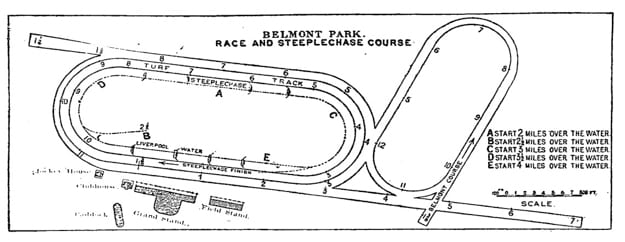
Belmont Park map from the New York Times in 1905. Used with permission of the New York Times.
Is it a bummer that the Belmont will be shorter this year? Of course it is. But to focus on that is to ignore the forest for the trees. For many people—and particularly, but not only, those of us in New York—Covid-19 has affected every part of life. Of course it’s also going to affect the traditions that we hold dear, and we can mourn the temporary loss of those traditions while we also celebrate the creativity that will enable them to happen, albeit in a different form.
A shorter Belmont makes sense for the horses, and a June Belmont will be the first major racing event—perhaps the first major sporting event?—since the onset of coronavirus. It will also assume a spot not long after its original date and it will provide a wider audience the opportunity to meet the horses on this new Triple Crown trail.
And if the horse that wins the Belmont goes on to win the Kentucky Derby, for the first time in history, a Triple Crown might be won at Pimlico. How cool is that?
LATEST OPINIONS
Piassek: Great Belmont performance left me empty
“I told myself I was fully prepared to hate-bet, hate-watch, and hopefully hate-cash on Sovereignty. But there was no joy as he crossed the wire in front.”
Preakness: A Baltimore-bred’s Pimlico memories
Longtime handicapper Gary Quill has been going to Pimlico for more than 60 years. Here’s what he’ll remember as a new facility replaces the old.
Op-ed: Time to modernize the condition book
Modernizing the condition book with 21st-century technology could be a cause that unites horsemen and management — and is long overdue.
Op-Ed: Heated industry defenses ignore backstretch workers
A New York Times op-ed criticizing racing generated heated industry responses that barely addressed the plight of backstretch workers.
Hamelback: Industry must speak out against decoupling
The horseracing industry must oppose a Florida “decoupling” proposal to sever the racing-gaming connection, says HBPA chief Eric Hamelback.
Piassek: Laurel needs to find post time sweet spot
There’s been a lot to like about the opening days of the 2025 Laurel Park meet. So why aren’t they betting it? The timing of races might be one issue.



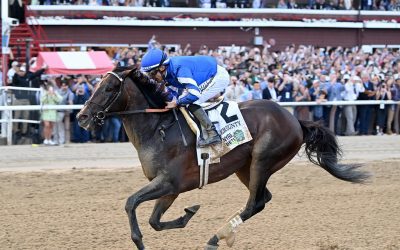

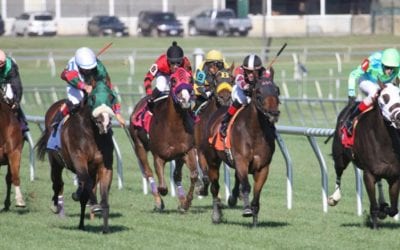
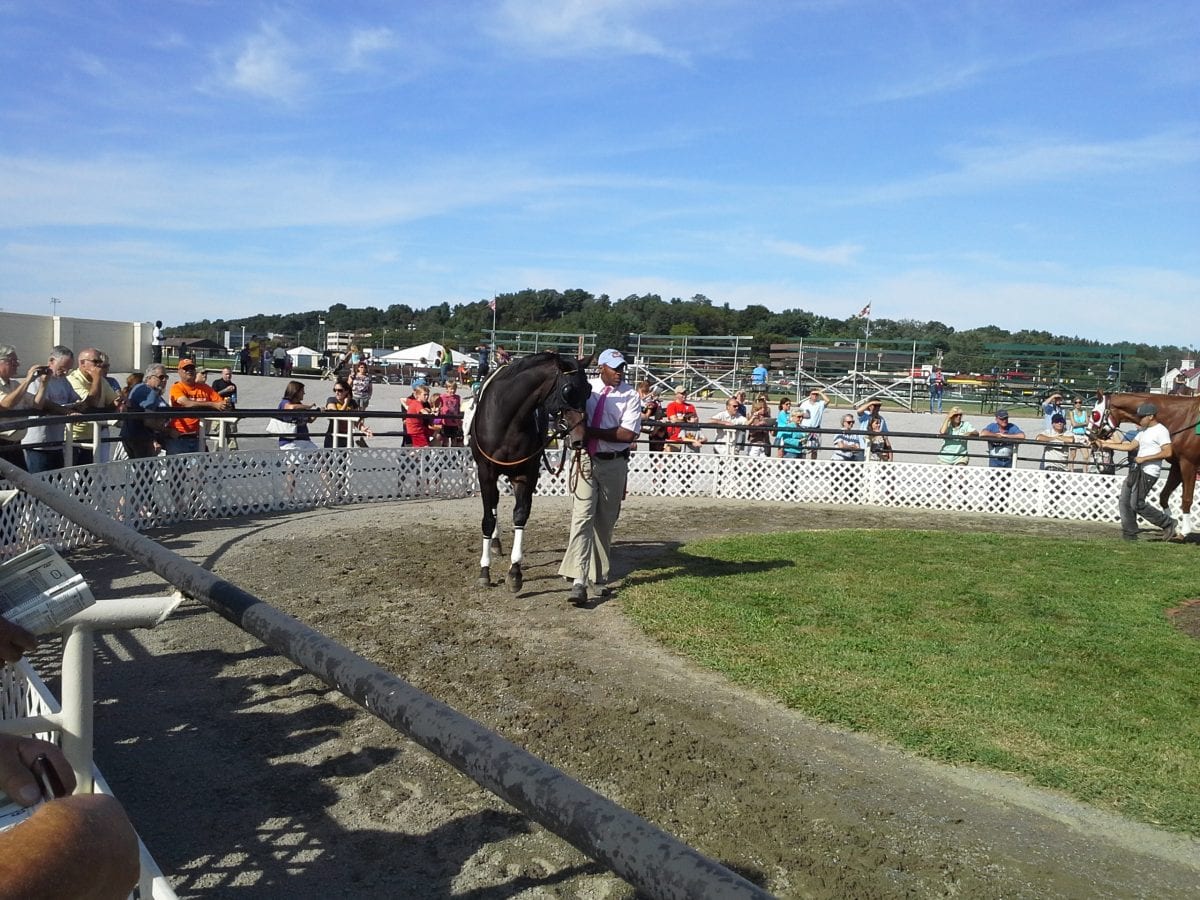
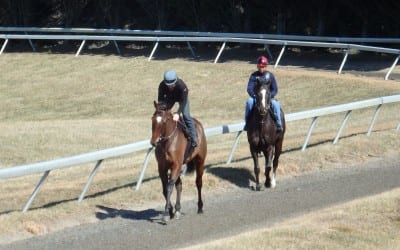
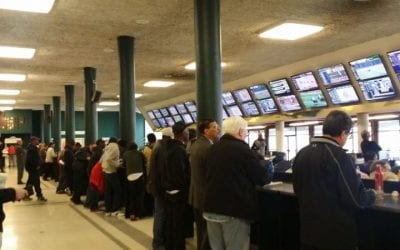






For people who are STILL furious with The New York Racing Association’s decision to run the Belmont Stakes as they are, this is as detailed an explanation as possible as to why NYRA had to schedule The Belmont the way they did IMO:
Given I believe NYRA could not make any announcements on The Belmont Stakes until they were allowed to resume racing, NYRA had no choice as it turned out other than to otherwise run The Belmont Stakes on October 24 and that would likely mean a subpar field that NYRA could likely get by running a rescheduled Wood Memorial at The Belmont Stakes distance on 10/24 due to the Breeders’ Cup only being two weeks later (10/24 would have been fine for an NBC telecast of The Belmont Stakes because Notre Dame is not on NBC that Saturday). As I have noted in a slew of comments, I actually would now have a rescheduled Wood as noted for say a $500-750,000 purse to throw a bone to those who are STILL clearly disgusted by this move by running what essentially would for this year be a replacement for the “real” Belmont Stakes.
The problems NYRA had otherwise were these:
Monmouth had the Haskell scheduled for July 18 dating back to last year (their contract with NBC for the Haskell dictated that date). NYRA could not run the Belmont July 11 because of that.
Notre Dame would not allow their game with Western Michigan on Sept. 19 to be moved to prime time to accommodate the Preakness being that day because Notre Dame alumni would have gone bonkers (and Mike Golic Jr. and Sr., both Notre Dame alumni themselves would have both ripped ND big-time for moving that game to the evening to accommodate a Preakness telecast on NBC on their ESPN Radio/ESPN 2 show in all likelihood) because especially their most wealthy alumni hate going to night games, even the one ND is required to have each year for NBC. It also would have been a very bad optic to move the game to NBCSN because for Western Michigan and the Mid-America Conference, that is their ONLY full-national, over-the-air TV game ALL YEAR (that is even though NBC is allowed to move one ND game a year to NBCSN). The MAC has experienced severe financial problems because of the Pandemic and they need that game to stay on NBC at all costs. Without that, we likely would have had the Preakness on September 19 and The Belmont Stakes on October 10 that had originally been widely expected.
Notre Dame’s refusal to change the start time of that one game AND the fact the Breeders’ Cup would have been two weeks after the one date the Belmont could have been realistically on in the fall left June 20, the date the Belmont is scheduled for, and August 8, the likely date for the Travers (as the PGA Championship is that weekend and that is NOT an NBC event) as the only realistic landing spots. The more logical move to me would have been to run the TRAVERS on June 20 at its traditional distance with the Belmont on August 8 at Saratoga at 1 3/8 Miles. August 8, however is ALSO Hambletonian Day at The Meadowlands, which is the biggest event in Harness Racing which the Meadowlands as of now still expects to be able to have fans for (Hambletonian Charter requires that race and its filly counterpart, the Hambletonian Oaks to have their finals run on the first or second Saturday in August). Given THAT situation AND knowing how uber-sensitive some in Harness Racing are with ANYTHING T-Bred racing does that in their minds slights them, that made August 8 a non-starter for The Belmont due to likely many in Harness Racing, as well as the Hambletonian Society AND New Jersey Officials screaming bloody murder if NYRA did that. THAT likely also played into why the Belmont is as it is this year.
ALL of the above is why NYRA had no choice but to do what it did. Unless somehow a deal can be ironed out where the Breeders’ Cup is pushed back (and I think the BC needs to be anyway for reasons unrelated to the sport) where the Belmont can be subsequently moved from June 20 to October 24 so it could be run at 1 1/2 Miles, this was the only choice NYRA had.